Kīlauea, one of the most active volcanoes on Earth, is a central geological and cultural landmark on Hawaiʻi Island, also known as the Big Island. Its frequent eruptions and dynamic landscape have not only sculpted the island's physical terrain but also shaped the spiritual and cultural identity of Hawaiʻi’s people. Revered in Hawaiian mythology as the home of Pele, the goddess of volcanoes and fire, Kīlauea embodies both creation and destruction. This remarkable volcano is more than just a natural wonder—it is a living, breathing force that continues to evolve.
Kīlauea is a shield volcano, meaning it has broad, gentle slopes built up by the flow of low-viscosity lava over time. It began forming approximately 210,000 to 280,000 years ago and emerged above sea level about 100,000 years ago. Geologists believe it is fed by the Hawaiian hotspot, a plume of superheated material rising from deep within the Earth’s mantle.
Unlike stratovolcanoes like Mount St. Helens, Kīlauea’s eruptions are typically non-explosive, allowing lava to spread gradually across vast areas. This contributes to the continuous growth of the Big Island, making it the youngest and largest of the Hawaiian Islands.
Kīlauea has a rich and often unpredictable eruption history. It has erupted nearly continuously from 1983 to today, largely from the Puʻu ʻŌʻō vent along its East Rift Zone. This 40-year eruption changed the island’s topography significantly, adding new landmass, destroying hundreds of homes, and creating dramatic lava flows that drew scientists and visitors from around the world.
The most significant modern eruption occurred in 2018, beginning in the lower Puna district. Massive fissures opened, emitting lava that engulfed entire neighborhoods, reshaped the coastline, and displaced over 2,000 residents. Simultaneously, the summit caldera at Halemaʻumaʻu collapsed, dropping over 1,600 feet and creating a massive crater. The eruption released substantial amounts of sulfur dioxide gas, impacting air quality and visibility across the island.
After a pause, volcanic activity resumed in December 2020, with periodic summit eruptions within Halemaʻumaʻu crater, creating a lava lake that continues to captivate scientists and tourists alike. As of 2025, Kīlauea remains under close observation by the U.S. Geological Survey’s Hawaiian Volcano Observatory (HVO), with minor seismic activity, gas emissions, and deformation suggesting magma remains close to the surface.

In Native Hawaiian culture, Kīlauea is sacred. It is believed to be the home of Pele, the fiery goddess of volcanoes. According to Hawaiian legends, Pele resides in Halemaʻumaʻu crater and is responsible for the eruptions that shape the land. Her presence is respected and revered; many locals leave offerings at the crater's edge in honor of her power.
This cultural reverence highlights a deep connection between the Hawaiian people and their environment. Rather than viewing volcanic activity as purely destructive, it is often seen as part of the natural cycle of life, death, and renewal—a force that creates as much as it consumes.
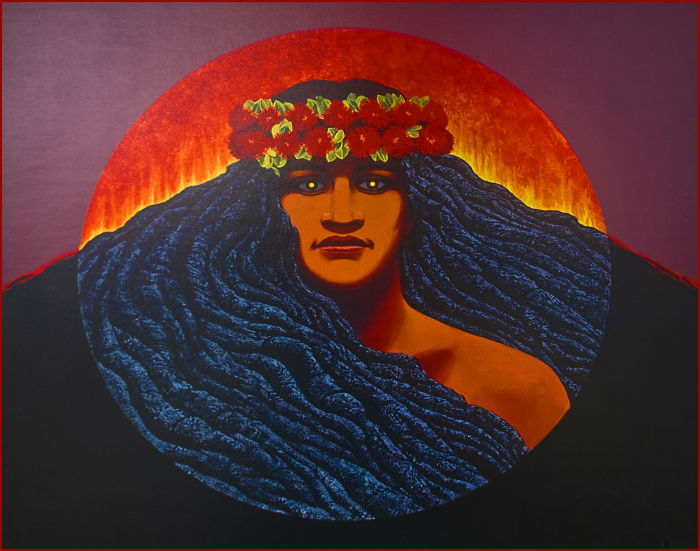
Today, Kīlauea is a major attraction within Hawaiʻi Volcanoes National Park, drawing over a million visitors annually. Tourists can view the active crater from safe distances, explore hiking trails, walk through lava tubes, and observe how volcanic forces continually reshape the landscape.
Some of the most popular sites include:
Visitors are advised to check eruption updates and park alerts before visiting, as conditions can change rapidly. The National Park Service and the USGS provide detailed, real-time information to ensure visitor safety and environmental protection.
https://www.nps.gov/havo/index.htm
Kīlauea is one of the most studied volcanoes in the world. Scientists monitor seismic activity, ground deformation, gas emissions, and thermal imagery to forecast eruptions and ensure public safety. The Hawaiian Volcano Observatory (HVO), established in 1912, is the lead agency responsible for monitoring Kīlauea and other Hawaiian volcanoes.
Recent research efforts include using drones for high-resolution imaging, deploying sensors around the caldera, and employing artificial intelligence to detect patterns in volcanic behavior. These innovations have greatly improved eruption forecasting and hazard mitigation.

While Kīlauea’s eruptions can be destructive, they also play a critical ecological role. Lava creates new habitats over time, and pioneering species like ʻōhiʻa lehua trees and ferns begin to colonize the barren rock. Over decades, these new lands evolve into thriving ecosystems.
Additionally, lava flows that reach the ocean expand the coastline and create new underwater environments rich in marine life. Despite the short-term devastation, the volcano contributes to the long-term renewal and biodiversity of the island.
Kīlauea is more than just a volcano—it is a living monument to the dynamic forces that have built and continue to shape the Hawaiian Islands. Its eruptions, while sometimes destructive, also symbolize renewal, resilience, and reverence. Whether you are a geologist, traveler, or cultural enthusiast, a visit to Kīlauea offers insight into the raw power of nature and the enduring spirit of the Hawaiian people.
If you would like to read and learn more about interesting things in Hawaii! Check out our blog page here on our website!
or
Sitting peacefully in the Pacific Ocean between Maui and Lanaʻi lies Kaho'olawe, a small, windswept island that holds profound cultural and spiritual significance for Native Hawaiians. Known traditionally as Kanaloa, the island is revered as a sacred place of navigation, worship, and connection to ancestral lineage. However, during and after World War II, Kaho'olawe was subjected to decades of relentless bombing and military testing by the United States Navy—leaving behind physical devastation, cultural loss, and environmental trauma that reverberates to this day.
Kaho'olawe's tragic transformation began in the aftermath of the attack on Pearl Harbor in December 1941. As fears of Japanese invasion heightened, the U.S. military sought secure and remote locations to conduct training exercises and weapons testing. Kaho'olawe, sparsely populated and largely uninhabited due to its arid environment, was deemed ideal.
In 1941, President Franklin D. Roosevelt issued an executive order placing Kahoʻolawe under the jurisdiction of the U.S. Navy. Soon after, the island became a training ground for ship-to-shore bombardment, aerial strafing, amphibious landings, and live-fire target practice. It was systematically pounded by explosives, including high-powered bombs, napalm, and eventually, during the Cold War era, simulated nuclear weapons.
While the island was always considered sacred to Native Hawaiians, its importance was largely ignored by military authorities during this period. Ancient heiau (temples), archaeological sites, and burial grounds were destroyed or damaged beyond recognition. The impact on the island’s fragile ecosystem was similarly catastrophic—vegetation was stripped, topsoil eroded, and entire areas became craters of scorched earth.
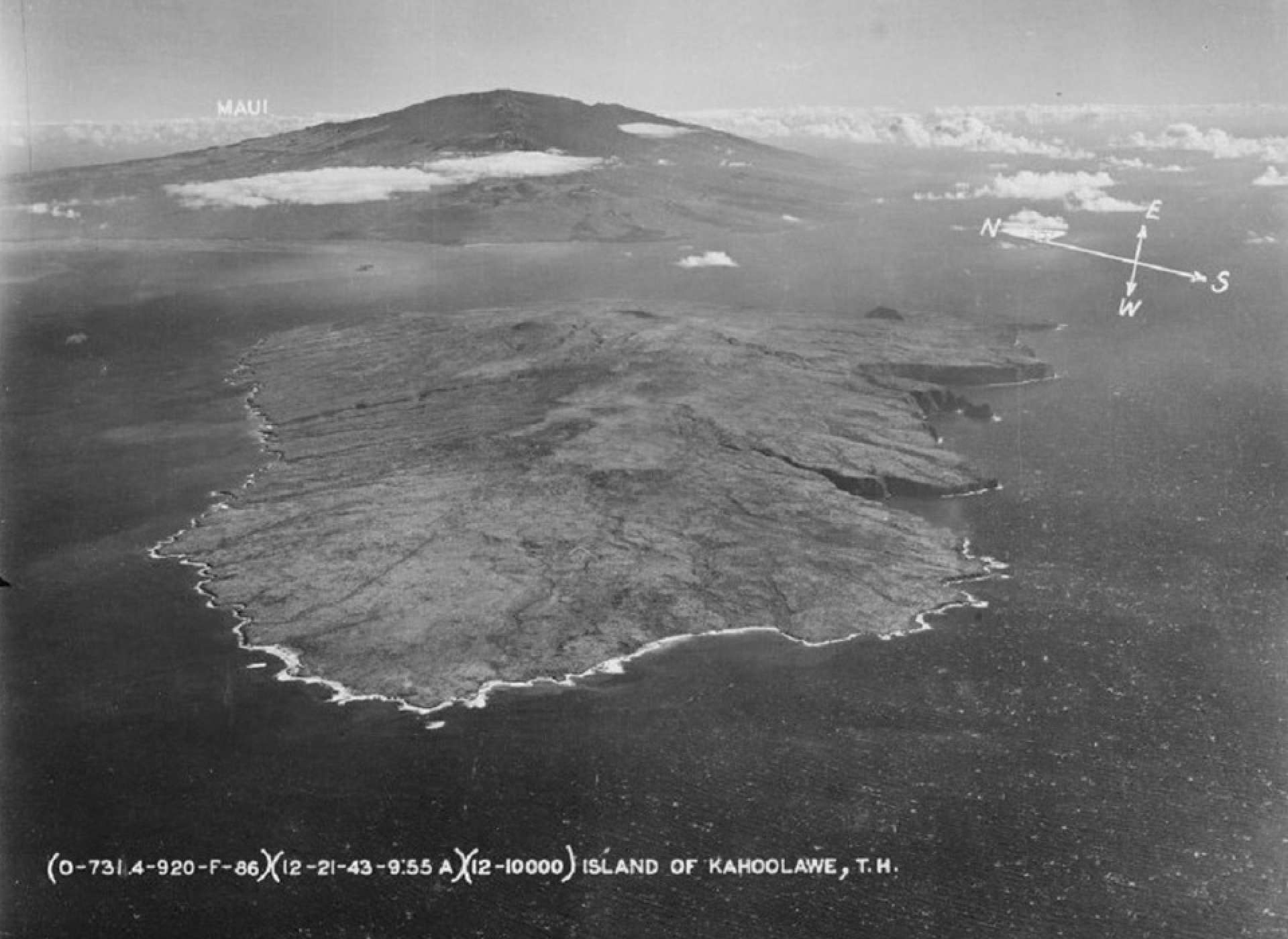
Though World War II ended in 1945, Kaho'olawe's suffering continued. The island was never returned to the people of Hawaiʻi. Instead, it became a permanent part of the U.S. Navy’s Pacific Fleet training operations, continuing to be bombed for decades under the rationale of military preparedness.
By the 1970s, amidst a broader Hawaiian Renaissance—a cultural movement focused on the revival of Native Hawaiian identity, language, and sovereignty—activists began to challenge the military’s occupation of the island. A grassroots group called Protect Kahoʻolawe ʻOhana (PKO) was formed in 1976, led by passionate cultural leaders such as George Helm and Kimo Mitchell. They called for an end to the bombing, the return of the island, and the restoration of its land and sacredness.
PKO’s movement drew national attention. Members of the group staged a series of high-risk occupations by secretly landing on the island to draw attention to its plight. Tragedy struck in 1977 when George Helm and Kimo Mitchell disappeared at sea during an attempt to reach Kaho'olawe—sacrifices that would galvanize support and intensify the movement.
Here is a YouTube video link that showcases some of the bomb test footage from those years:
After years of protest, lawsuits, and growing public scrutiny, the U.S. Navy finally ceased live-fire training exercises in 1990, under orders from President George H. W. Bush. Four years later, in 1994, the island was officially transferred back to the State of Hawaiʻi, though it remained under a federal mandate for cleanup.
Congress authorized $400 million for the cleanup effort, known as the Kahoʻolawe Island Conveyance Commission (KICC) project. However, the task was enormous. The U.S. Navy had turned Kahoʻolawe into one of the most extensively bombed islands in the Pacific, and a large portion of the island was still littered with unexploded ordnance (UXO)—including deep-buried munitions that posed long-term hazards.
The goal was to clear at least 100% of the surface and 25% of the subsurface, but due to the dangers and complexities involved, only about 75% of the surface and less than 10% of the subsurface were deemed safe by the time cleanup efforts officially ended in 2003. Much of the island remains off-limits for public access due to these lingering dangers.
The legacy of the bombings on Kahoʻolawe is multifaceted—environmental, cultural, and spiritual. The island’s landscape remains scarred by craters, eroded gullies, and large swaths of lifeless land. Its already arid climate, compounded by decades of deforestation and explosive impacts, has made ecological recovery a daunting task.
Culturally, the loss was immeasurable. Ancient stone structures, petroglyphs, and sacred sites were damaged or destroyed. For many Hawaiians, this represented not just a loss of physical artifacts, but a severing of spiritual ties to the land and ancestors.
However, the movement to reclaim and restore Kahoʻolawe has sparked a cultural rebirth. Since the return of the island, restoration efforts have included planting native species, controlling erosion, and reviving traditional practices. Kahoʻolawe is now managed by the Kahoʻolawe Island Reserve Commission (KIRC), which oversees access and stewardship of the island for cultural, educational, and environmental purposes.
Only Native Hawaiians or those involved in official restoration efforts are permitted to visit, and overnight stays are highly regulated. These visits often include ceremonies, chants (oli), and work to heal the land—both symbolically and physically.
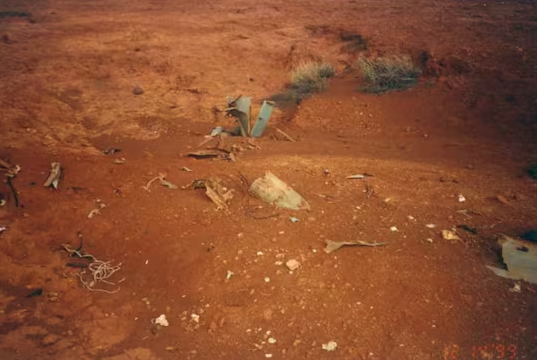
Today, Kahoʻolawe stands as both a symbol of the destructive impacts of militarization and a testament to the resilience of Native Hawaiian culture. It is a living example of how cultural identity, once suppressed and overlooked, can rise again through collective effort, remembrance, and aloha ʻāina—a deep love for the land.
The island’s story continues to inspire movements across Hawaiʻi and beyond, calling attention to the long-term effects of colonization, environmental degradation, and the need for Indigenous stewardship. While Kaho'olawe may never be fully restored to its former self, its journey from devastation to renewal is a powerful reminder that healing is possible—through time, effort, and a commitment to honoring the past.
To Learn More:
These organizations continue the vital work of healing Kaho'olawe and keeping its history alive for future generations.
If you would like to read and learn more about interesting things in Hawaii! Check out our blog page here on our website!
or
Kaua’i, often called the “Garden Isle,” is one of Hawaii’s most enchanting destinations. Known for its lush landscapes, dramatic cliffs, and pristine beaches, Kaua’i offers a unique blend of adventure, relaxation, and cultural experiences. Whether you’re a nature enthusiast, beach lover, or cultural explorer, here’s a curated guide to the top things to do in Kaua’i.
The Nā Pali Coast is a breathtaking stretch of rugged cliffs rising above the Pacific Ocean. Known for its emerald valleys and cascading waterfalls, it’s best experienced by boat, kayak, or helicopter. This coast is one of the most recognizable and most beautiful coasts in the world!
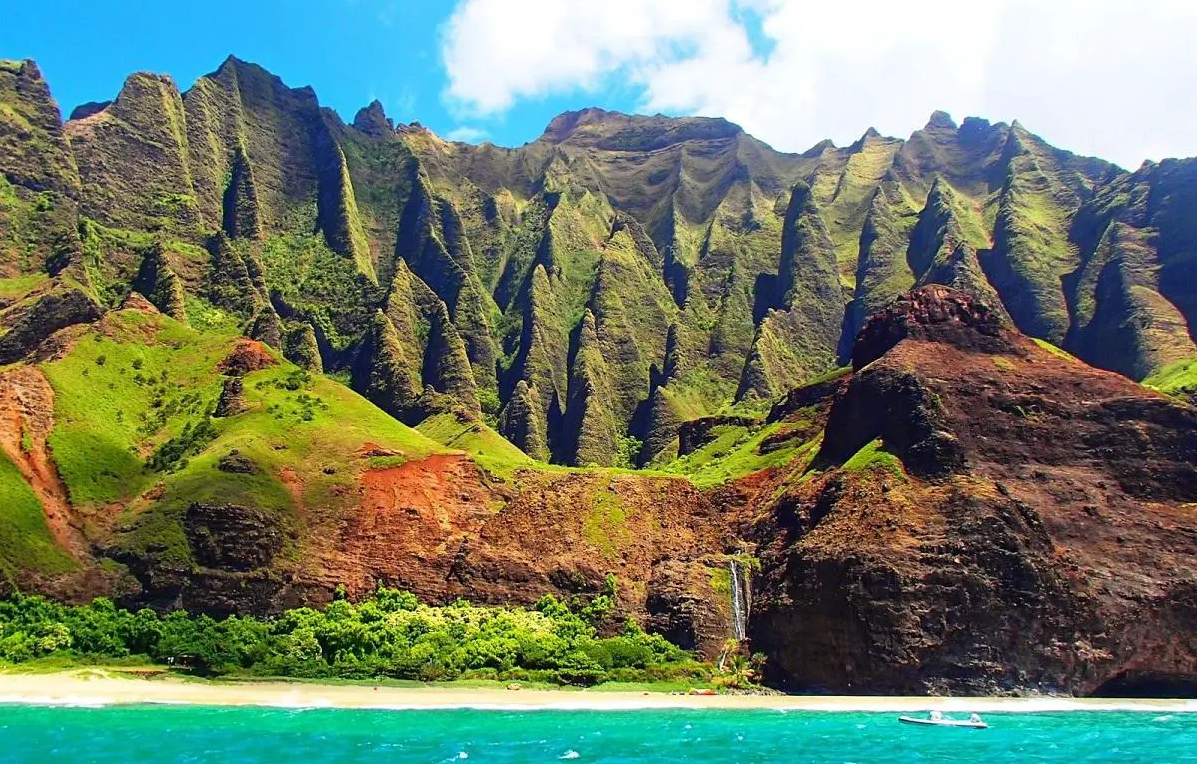
Often called the “Grand Canyon of the Pacific,” Waimea Canyon boasts dramatic red and green hues, deep valleys, and panoramic lookouts. This canyon is 10 miles long, its widest point reaching about a mile, and with a staggering depth of 3500 feet. The Hawaiian term "Waimea" translates to reddish water, with the bottom of the gorge featuring these red waters.
For hikers, trails like the Canyon Trail to Waipo'o Falls offer a chance to experience the canyon’s beauty up close. Plan your visit with Hawaii State Parks.
https://gostateparks.hawaii.gov/
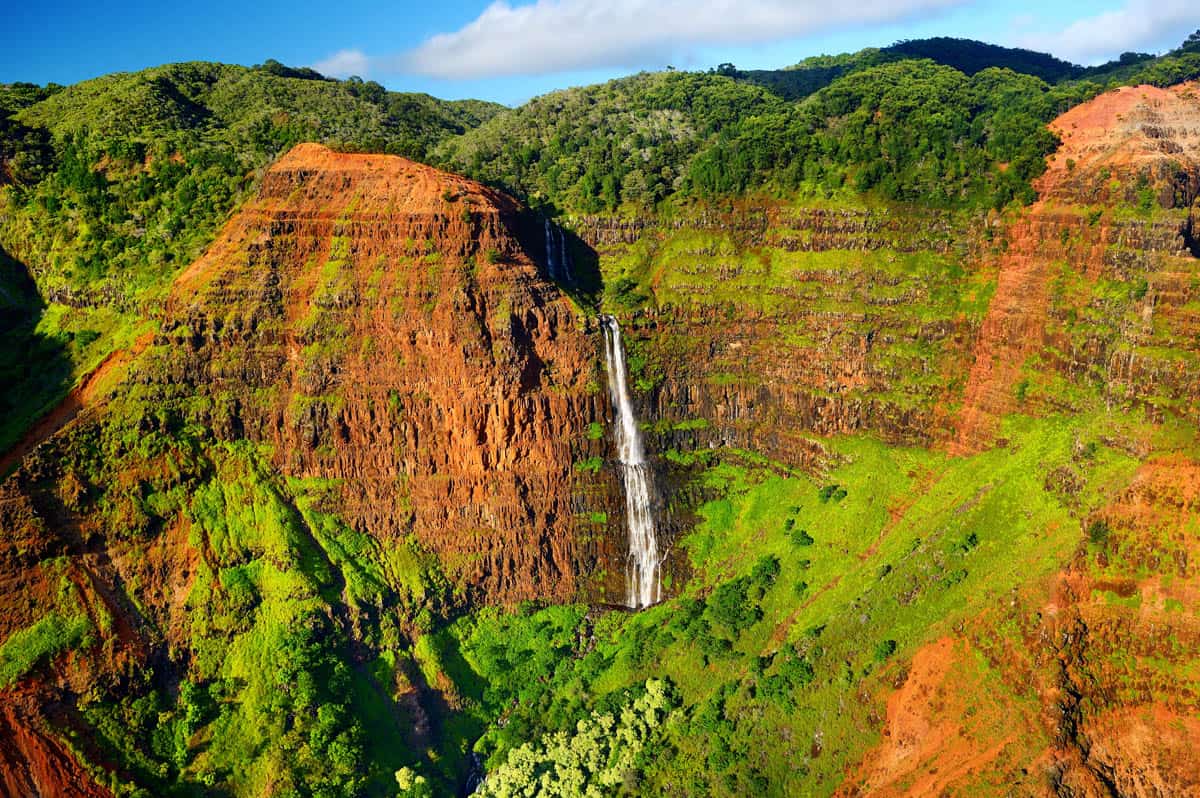
With its crescent-shaped beach and backdrop of verdant mountains, Hanalei Bay is one of Kaua’i’s most iconic locations. Located on the Northshore of Kaua'i and gives the best vibes of Kauai's laid back energy, This bay was built in the late 19th century as a sugar and rice transportation hub. This is a very popular spot amongst locals and visitors alike, used for fishing, picnics, or even watching the beautiful golden sunset over the pacific horizon. Making this and excellent place to swim, surf, or even sunbathe in the summer time.
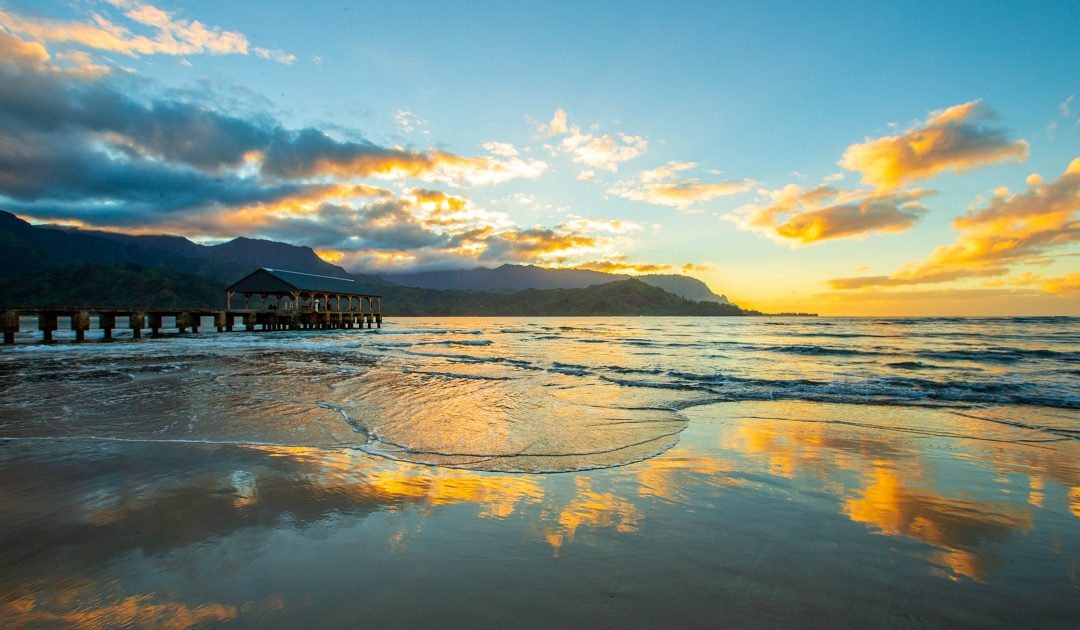
Located just north of Līhuʻe, Wailua Falls is an easily accessible double waterfall plunging over 80 feet. Found at the south end of Wailua river, Wailua Falls can be scene from the roadside, with a very easy hike down. The surrounding scenery makes these falls looks even bigger than it is!

Adjacent to Waimea Canyon, Koke’e State Park offers cooler temperatures, native forests, and stunning views of the Napali Coast. Koke'e State Park is spread over 4,300 acres, covered with lush fauna, and beautiful hiking trails. For those interested in the history of the area, the Koke'e Natural History Museum is amazing for any information regarding the area.
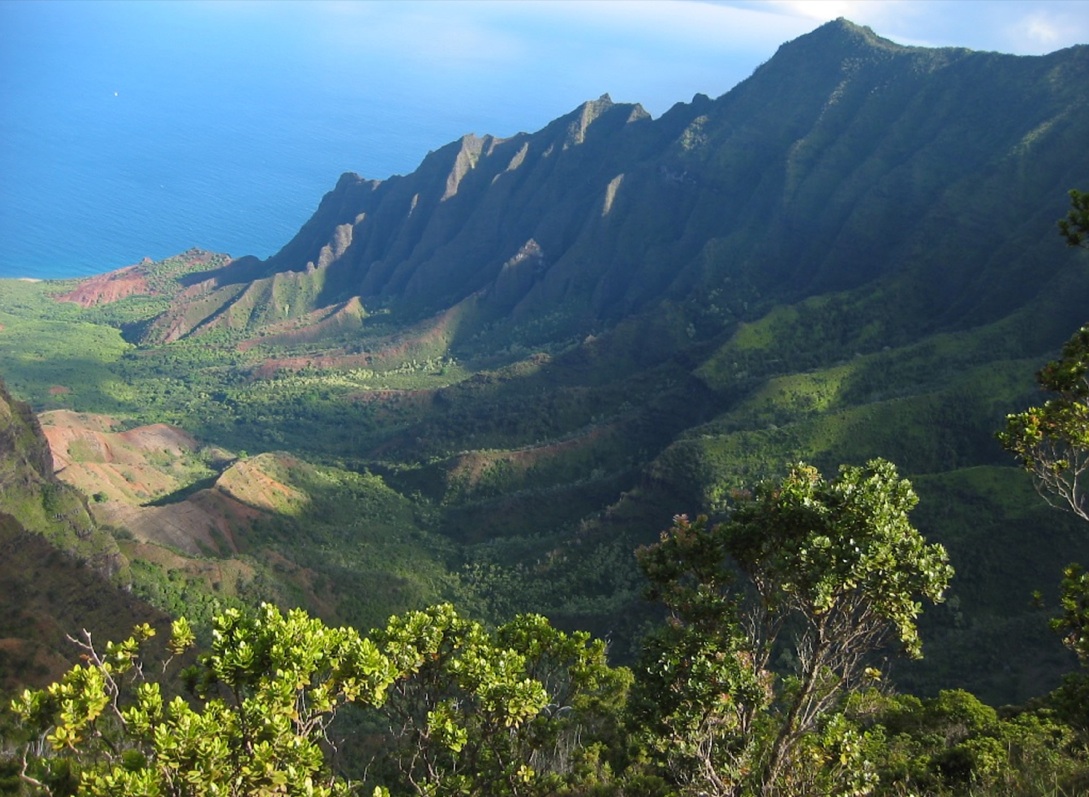
On the sunny south shore of Kaua’i, Poʻipū Beach is renowned for its golden sands and family-friendly waters. This mesmerizing beach offers picturesque clear waters, amazing sunbathing, and you may get lucky and be visited by a Hawaiian Monk Seal. This beach park is perfect for many families looking to enjoy a day of leisure, offering life guards, showers, and easy wading waters.
Nearby resorts, like Koa Kea Hotel & Resort, offer luxurious amenities.
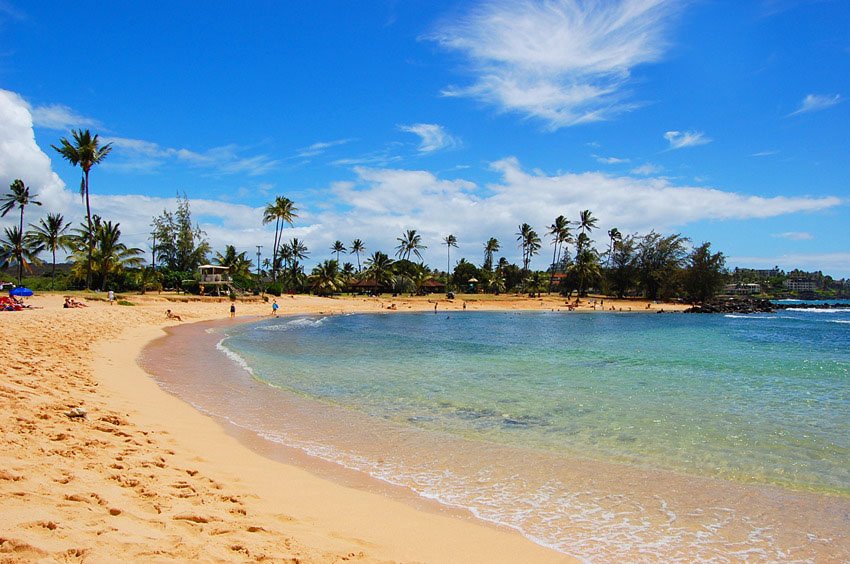
For an invigorating hike with panoramic views of the island’s east side, tackle the Sleeping Giant Trail.This moderate trail winds through forests to a rocky summit, offering expansive views of Wailua and beyond. Get details on AllTrails. The Nounou Mountains resembles a sleeping giant that is lying on his back. Hawaiian stories tell of a giant who fell asleep after eating a large meal.
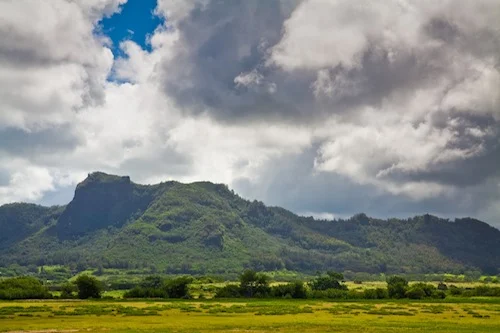
Immerse yourself in Kaua’i’s natural and cultural history at Limahuli Garden, part of the National Tropical Botanical Garden.Explore native plants, ancient terraces, and learn about traditional Hawaiian land use. Visit Limahuli Garden for hours and tour options.
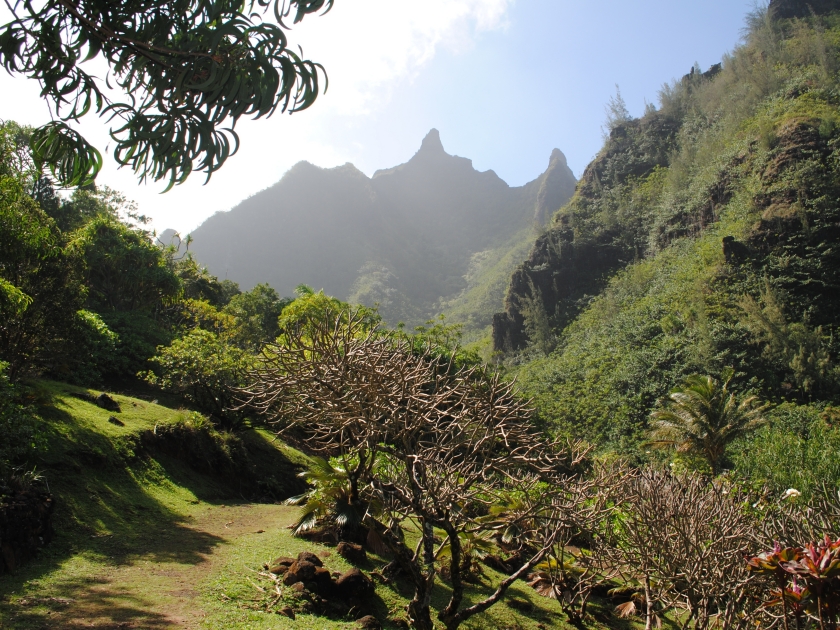
The Wailua River is Kaua’i’s only navigable river and offers a tranquil experience surrounded by lush landscapes. A very popular attraction that is known for its scenic beauty, and one of the only navigable rivers in Hawaii.
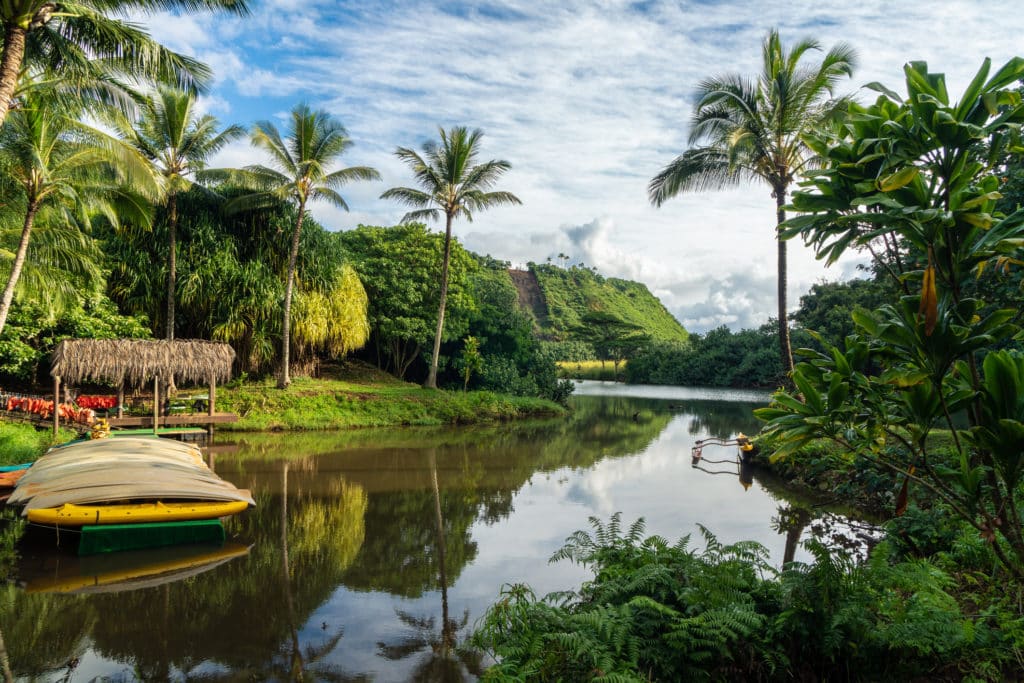
Experience the rich culture of Kaua’i with a traditional Hawaiian luau. Enjoy Polynesian dancing, music, and a feast of local dishes.Popular choices include Smith’s Tropical Paradise Luau (Smith’s Kauai), Luau Kalamaku (Luau Kalamaku), and the Grand Hyatt Kauai Luau (Hyatt Luau).
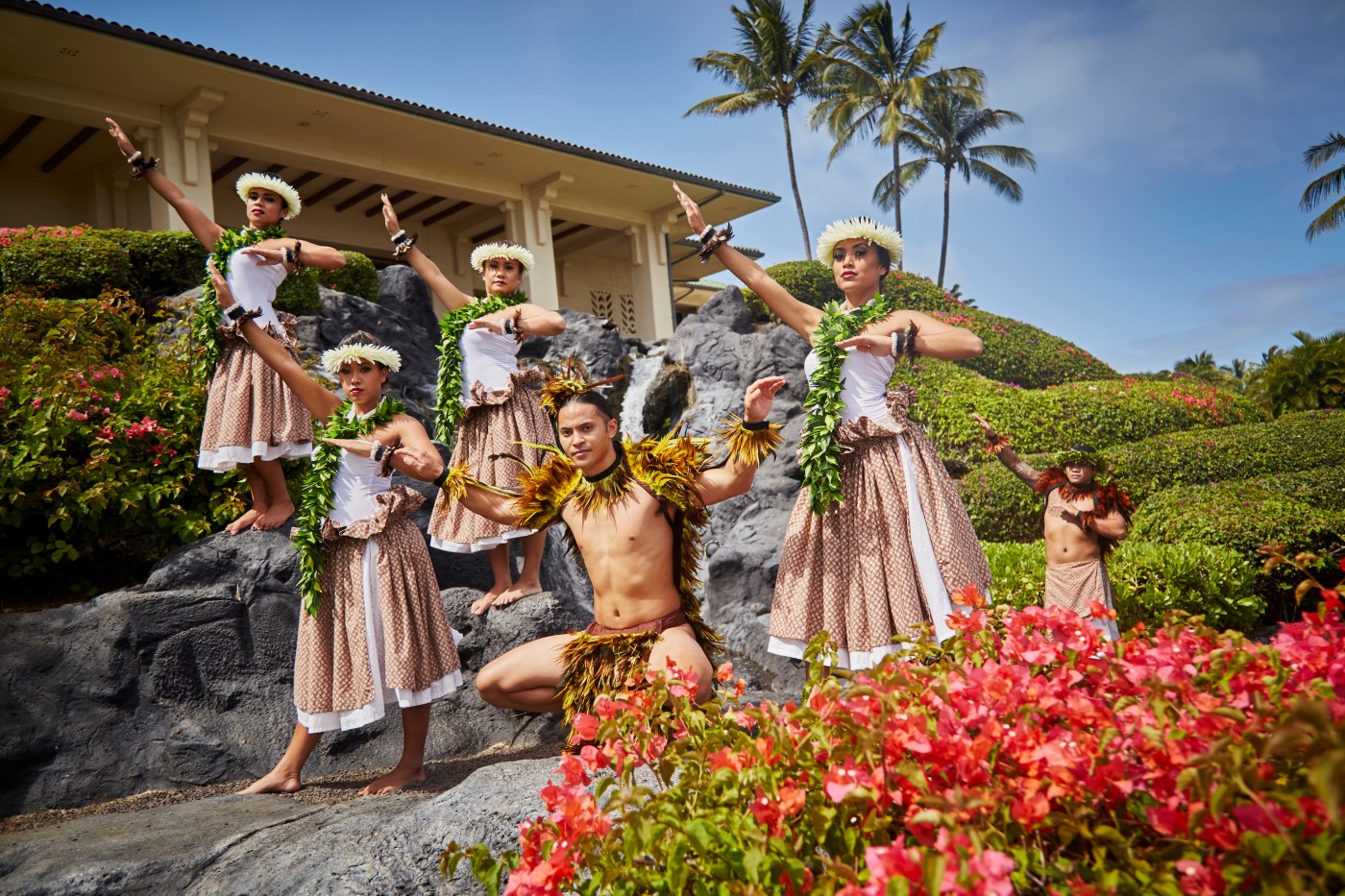
Kaua’i’s blend of natural wonders, cultural heritage, and island charm make it a must-visit destination in Hawaii. Whether you’re chasing waterfalls, relaxing on pristine beaches, or exploring lush gardens, the Garden Isle promises unforgettable experiences for every traveler.
As you plan your Kaua’i adventure, consider booking tours and activities in advance, especially during peak seasons. From dramatic landscapes to warm hospitality, Kaua’i is sure to leave a lasting impression.
If you would like to read and learn more about interesting things in Hawaii! Check out our blog page here on our website!
or
In the misty uplands of Waimea, through the rolling pastures of Molokaʻi, and across the sprawling ranches of upcountry Maui, a powerful legacy lives on—that of the paniolo, Hawaii’s cowboys. While many recognize them for their rugged horsemanship and contributions to island ranching, few understand the depth of their impact on Hawaiian identity. Beyond wrangling cattle and riding horseback, the paniolo were instrumental in preserving Hawaiian language and culture during one of the most turbulent eras in the islands' history.
The story begins in the early 19th century. After British explorer George Vancouver gifted cattle to King Kamehameha I in the 1790s, those animals multiplied unchecked, becoming a growing threat to farmland and forests. To manage the explosive cattle population, Kamehameha III (Kauikeaouli) invited experienced Mexican vaqueros—Spanish-speaking cowboys from California—to the Hawaiian Islands in the 1830s.
These vaqueros brought with them expertise in ranching, roping, saddle-making, and horsemanship. Hawaiian men were quick learners, absorbing these new skills and adapting them to their own environment. Over time, the Hawaiian term paniolo, believed to derive from “Español,” came to represent this new breed of cowboy—one who blended Hawaiian tradition with Mexican technique.
But the influence of these vaqueros ran deeper than the physical skills they taught. They shared a way of life grounded in respect for the land, strong family ties, music, and storytelling—values that mirrored those in traditional Hawaiian society. The result was not just a new profession, but a new cultural identity: the paniolo, proud stewards of the land (kuleana) and protectors of Hawaiian spirit.
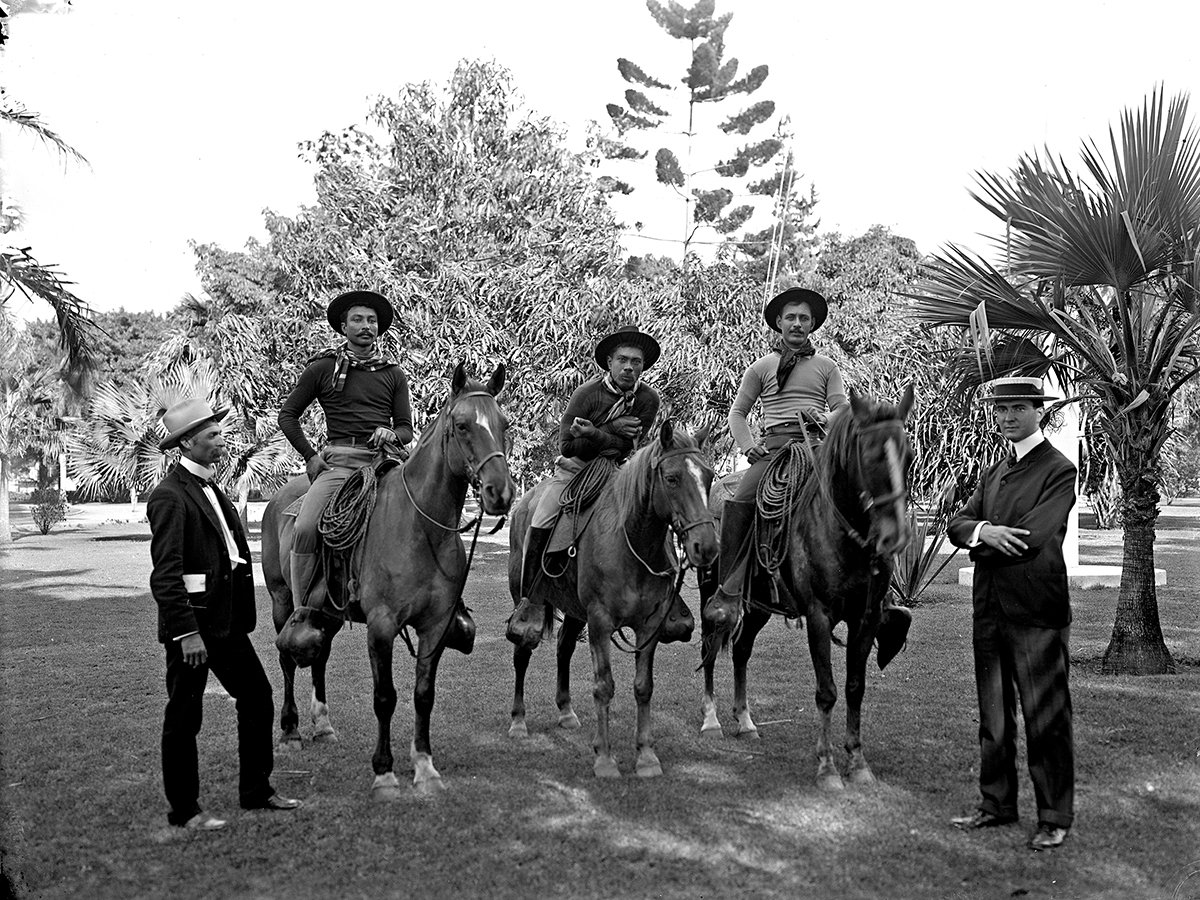
While the paniolo helped birth a thriving ranching economy, their most profound contribution may have come decades later, when Hawaiian identity faced near erasure.
Following the illegal overthrow of the Hawaiian Kingdom in 1893 and the subsequent annexation by the United States in 1898, sweeping changes were forced upon the islands. In 1896, Hawaiian was banned as a language of instruction in schools. Speaking the language in public was discouraged or outright punished sometimes, punishable by death. English-only policies became a tool of cultural suppression, designed to assimilate Native Hawaiians into Western norms.
In cities and towns, this pressure took its toll. Hawaiian children were discouraged from speaking their mother tongue, and generations began to grow up without fluency in their native language. But in the countryside—on the remote ranches of Hawaiʻi Island, Molokaʻi, and Maui—the story was different.
The paniolo lived far from government centers and urban control. On the ranches, Hawaiian remained the language of daily life. Cowboys spoke Hawaiian in the fields, at home, in song, and in prayer. Oral traditions, chants (oli), and ancestral knowledge were passed from parent to child without interruption. These ranchlands became cultural sanctuaries, where Hawaiian identity endured in spite of official efforts to silence it.
The paniolo didn’t set out to be activists or revolutionaries—they simply lived according to the values of their ancestors. In doing so, they kept the language alive when it was outlawed. They kept aloha ʻāina—love of the land—at the core of their daily lives. They upheld ʻohana—family—and the importance of story and song. And perhaps most powerfully, they maintained a sense of pride in being Hawaiian, even when the dominant culture tried to erase it.

The legacy of the paniolo endures today not just through ranching, but through rodeo culture, which remains vibrant in rural Hawaiʻi. These events—held annually in towns like Makawao, Waimea, and Kaunakakai—are more than just competitions. They are celebrations of identity, where Hawaiian language is spoken freely, and traditions are proudly displayed.
Slack-key guitar and mele paniolo (cowboy songs) echo through the air, telling stories of hardship, humor, and heritage. Rodeos serve as modern spaces where Hawaiian values and community thrive—further testament to the paniolo’s role in cultural preservation.
If you are interested in booking tickets or more information on the Makawao Rodeo here are links to booking, etc.
Bookings: oskiericeeeventcenter.com
Information: https://bossfrog.com/makawao-rodeo/general/
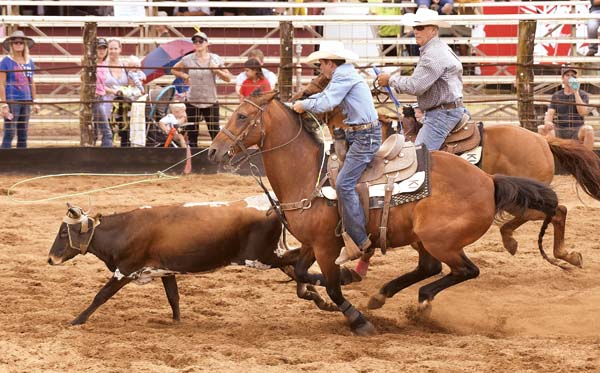
When the Hawaiian Renaissance began in the 1970s—a movement aimed at restoring language, culture, and sovereignty—it found that the roots had never been fully lost. In part, that was thanks to the paniolo. The oral language, still spoken fluently by many elder cowboys, became a lifeline for linguists and educators rebuilding curriculum for Hawaiian language immersion schools. The values embedded in paniolo life—self-reliance, stewardship, and storytelling—matched perfectly with the goals of the movement.
Today, many Hawaiian immersion programs and cultural centers recognize the contribution of paniolo families in preserving the language. Elders who once roped cattle are now seen as cultural heroes—unintentional but vital defenders of Hawaiian heritage during a time of crisis.
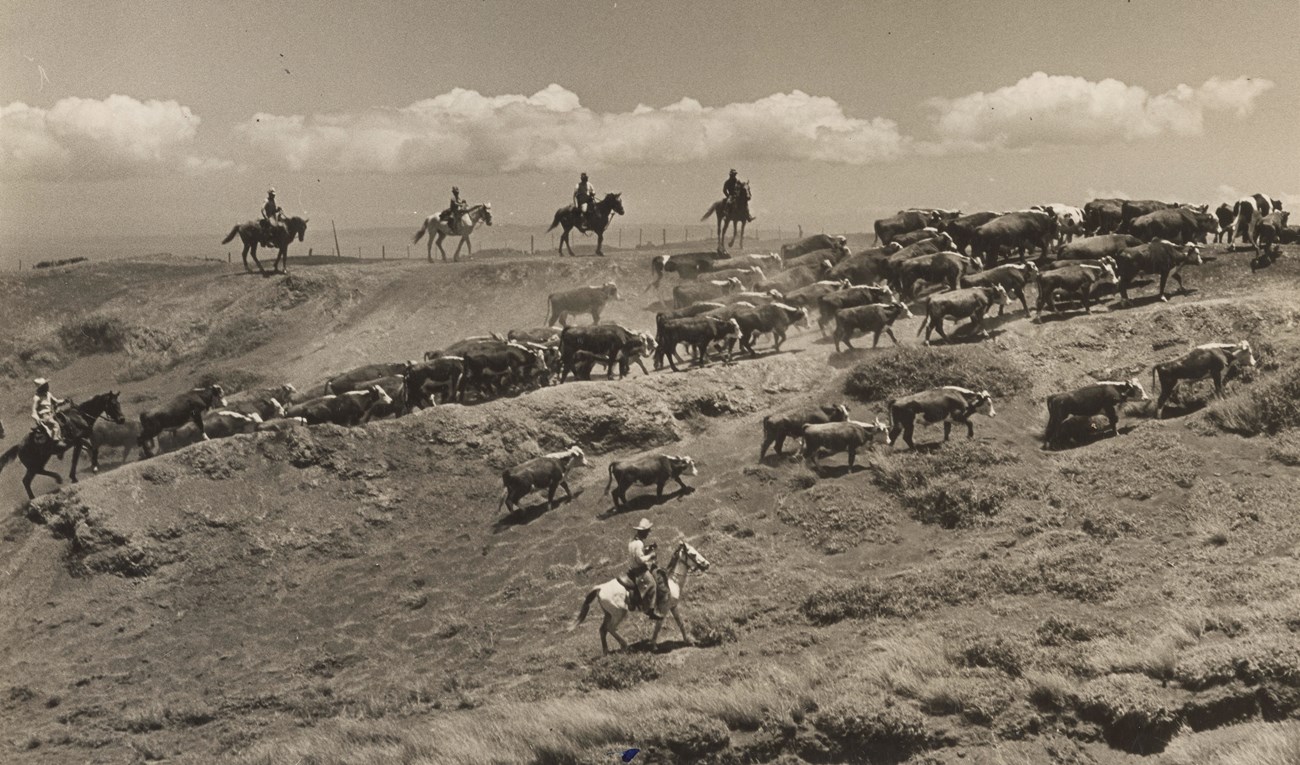
The story of the paniolo is not just about cattle or cowboy hats. It’s about resilience. It’s about a group of people who, through quiet strength and cultural pride, preserved a language and identity that others tried to erase. The legacy of the Mexican vaqueros lives on through them, but the spirit of the paniolo is deeply, undeniably Hawaiian.
So next time you hear a cowboy song in Hawaiian, see a young rider at a rodeo, or visit the open pastures of upcountry Maui, remember: you're witnessing the continuation of a legacy that refused to be silenced.
If you would like to read and learn more about interesting things in Hawaii! Check out our blog page here on our website!
or
Perched over 10,000 feet above sea level, Haleakalā Crater in Maui offers one of the most extraordinary stargazing experiences on Earth. This dormant volcano, located within Haleakalā National Park, is renowned for its pristine night skies, minimal light pollution, and breathtaking celestial views. Whether you're an amateur astronomer, a seasoned stargazer, or simply seeking a unique adventure, Haleakalā's summit provides an unforgettable encounter with the cosmos.
Haleakalā's summit stands at 10,023 feet, placing it above a significant portion of Earth's atmosphere. This elevation, combined with the area's dry air and isolation from urban light sources, creates optimal conditions for observing stars, planets, and deep-sky objects. The name "Haleakalā" means "House of the Sun" in Hawaiian, and according to local legend, the demigod Māui lassoed the sun from this very summit to slow its journey across the sky.
The crater itself is an erosional valley nearly 7 miles across, 2 miles wide, and 2,600 feet deep. Its unique geological features and high elevation contribute to the area's exceptional visibility, making it a prime location for both amateur and professional astronomers.

For those who prefer a self-guided experience, Haleakalā National Park welcomes visitors to stargaze from the summit. The park's high elevation and remote location offer some of the darkest skies in the United States. However, it's essential to come prepared: temperatures can drop into the 40s or lower, even during summer months. Dress in layers, including a windproof outer layer, and consider bringing gloves, a hat, and a blanket for added warmth.
A red flashlight is recommended to preserve night vision, and a reclining chair can enhance comfort during extended viewing sessions. Remember to allow your eyes at least 30 minutes to adjust to the darkness for optimal stargazing.
Please note that overnight stays within the park are only permitted in designated campgrounds, such as Hosmer Grove Campground in the summit district. Sleeping in vehicles outside of these areas is prohibited. Here is a direct link to book at Hosmer Grove if you plan to view the cosmos.
https://www.recreation.gov/camping/campgrounds/10068557
Here is a video about the sunset and stargazing atop the world!
For a more structured experience, several tour operators offer guided stargazing adventures on Haleakalā. These tours often include transportation, expert commentary, and high-powered telescopes for an in-depth exploration of the night sky.
Maui Stargazing provides an extensive tour of Haleakalā National Park, featuring a scenic sunset picnic followed by a science-based telescope adventure. Guests can observe visible planets and deep-sky objects of the Milky Way, including nebulae and star clusters, through a 12-inch aperture Dobsonian telescope. The tour includes winter jackets, fleece hats, gloves, and insulated snow pants to ensure comfort during the chilly evening hours.
https://www.mauistargazing.com/
Maui All Stars offers a sunset and stargazing tour that allows guests to observe the moon, stars, and galaxies using a large GPS telescope and laser pointer. The experience is hosted by an expert guide and includes convenient pick-up locations around the island.
https://www.hawaiiactivities.com/en/hawaii/maui/a/176011
Plan Ahead: Check the weather forecast before your trip, as conditions can change rapidly. Also, familiarize yourself with the park's regulations and obtain any necessary permits or reservations in advance.
Haleakalā holds deep spiritual significance for Native Hawaiians, who consider the summit a sacred place used for religious ceremonies and connecting with ancestors. Visitors are encouraged to approach the area with respect and mindfulness, honoring its cultural importance. Recent proposals to construct new telescopes on the summit have faced opposition from the local community, highlighting the need to balance scientific exploration with cultural preservation.

Stargazing at Haleakalā Crater is more than just a visual delight; it's a profound experience that connects you with the universe and the rich cultural tapestry of Hawaii. Whether you choose a guided tour or a self-directed adventure, the summit offers an unparalleled opportunity to witness the wonders of the night sky in a setting of natural and spiritual grandeur.
If you would like to read and learn more about interesting things in Hawaii! Check out our blog page here on our website!
or
Language is more than a means of communication—it is a reflection of culture, history, and identity. Nowhere is this more evident than in Hawaii, where a unique form of English-based creole known as "Pidgin" has evolved over the past century. Officially referred to as Hawai‘i Creole English, Pidgin is a rich, dynamic language that encapsulates the multicultural heritage of the islands. Its development is deeply tied to Hawaii's complex social, economic, and cultural history, particularly during the plantation era. Today, while sometimes misunderstood, Pidgin remains a vital and expressive part of local identity.
The roots of Pidgin in Hawaii can be traced back to the mid-19th century, during a period of significant immigration and economic transformation. Following the decline of the whaling industry, Hawaii shifted toward an agricultural economy dominated by sugarcane and pineapple plantations. These plantations required a large labor force, which led to an influx of workers from China, Japan, Portugal, Korea, the Philippines, Puerto Rico, and other parts of the world.
These immigrant groups, each speaking their own languages, had to find ways to communicate with one another and with English-speaking plantation owners. This necessity gave birth to a rudimentary contact language—an early form of Pidgin—that incorporated vocabulary primarily from English, with grammatical influences from Hawaiian, Japanese, Portuguese, Cantonese, and other languages. At this stage, the language was not yet fully developed or standardized; it functioned mainly as a tool for basic communication.

Over time, as immigrant families settled and generations were born and raised in Hawaii, Pidgin evolved from a simple trade language into a fully developed creole. By the early 20th century, children growing up in multilingual communities began acquiring Pidgin as their first language. This generational shift marked the transformation from a pidgin (a simplified language used for specific purposes) into a creole (a native language with its own stable grammar and vocabulary). For example, instead of saying "He is going to the store," a Pidgin speaker might say, "He stay going store.", another example is many here in Hawaii will say "close the light", instead of "Turn off the light.
Here is a short video talking about the origins of pidgin in Hawaii:
Here is a website that features some of the most common pidgin terms used in Hawaii:
For many in Hawaii, Pidgin is more than a way of speaking—it is an expression of local identity and solidarity. It reflects shared history, values, and a sense of place. It often carries nuances and cultural references that are difficult to translate into standard English. As such, Pidgin is commonly used in informal settings, storytelling, comedy, local literature, and even political discourse to connect authentically with local audiences.
Pidgin is a linguistic treasure that tells the story of Hawaii’s multicultural roots and the resilience of its people. Born out of necessity, shaped by diversity, and sustained by community, it continues to thrive as a powerful marker of identity and cultural pride. As public understanding and appreciation grow, Pidgin stands as a testament to Hawaii’s rich linguistic tapestry—one that deserves both recognition and respect.
If you would like to read and learn more about interesting things in Hawaii! Check out our blog page here on our website!
or
On August 21, 1959, Hawaii officially became the 50th state of the United States. This landmark event marked the culmination of a long and complex history involving indigenous sovereignty, strategic military importance, cultural transformation, and political negotiation. While the date of statehood is straightforward, the story behind how Hawaii became a state is anything but simple. Understanding Hawaii’s path to statehood requires a deeper look into its monarchy, its annexation, its role in American defense strategy, and the political movements of the 20th century.
Before becoming a U.S. state, Hawaii was an independent and internationally recognized sovereign nation. The Hawaiian Kingdom was established in 1795 under King Kamehameha I, who unified the Hawaiian Islands into a single kingdom. Over the next several decades, the Kingdom of Hawaii maintained its independence, signed treaties with major world powers, and even had diplomatic missions abroad.
This period of sovereignty saw the development of a complex governmental system, a constitution, and a thriving multicultural society. However, Hawaii’s strategic location in the Pacific and its fertile lands made it increasingly attractive to foreign powers, particularly the United States.
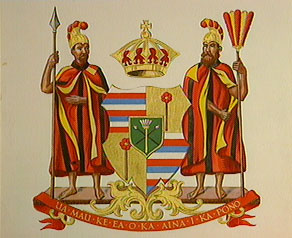
In 1893, the sovereign Kingdom of Hawai‘i was overthrown in a coup d’état orchestrated by a small group of American and European business interests, with the support of the U.S. Minister to Hawai‘i and U.S. Marines. Queen Liliʻuokalani, Hawai‘i’s last reigning monarch, was deposed under duress in an act widely condemned as illegal and unjust.
Despite strong opposition from Native Hawaiians and an official investigation by President Grover Cleveland that acknowledged the illegality of the coup, the provisional government pressed forward. In 1898, the United States annexed Hawai‘i through the Newlands Resolution—a controversial move lacking a treaty of annexation ratified by the U.S. Senate or the consent of the Hawaiian people.
This chapter in history remains a source of deep pain and protest. In 1993, on the 100th anniversary of the overthrow, the U.S. government formally apologized through the Public Law 103-150 (the "Apology Resolution"), acknowledging that the overthrow was unlawful and that the Native Hawaiian people never relinquished their claims to sovereignty.
The legacy of this event continues to influence Hawaiian identity, cultural preservation, and calls for justice and self-determination today.
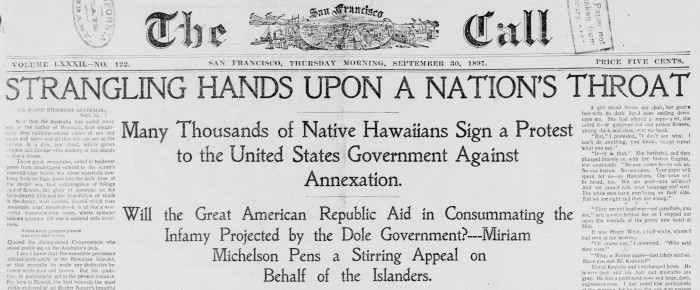
Hawaii’s importance to the U.S. was dramatically underscored during World War II, particularly with the attack on Pearl Harbor on December 7, 1941. This attack led directly to the United States’ entry into the war and solidified Hawaii’s strategic military value.
Throughout the war, Hawaii served as a central hub for the U.S. military in the Pacific Theater. Its geography made it a critical base for both defensive and offensive operations. This military significance further reinforced the United States’ interest in permanently integrating Hawaii into the union.
However, statehood remained elusive for decades. Despite Hawaii’s loyalty and strategic importance, political resistance—often rooted in racial prejudice and concerns about its predominantly non-white population—slowed the process.
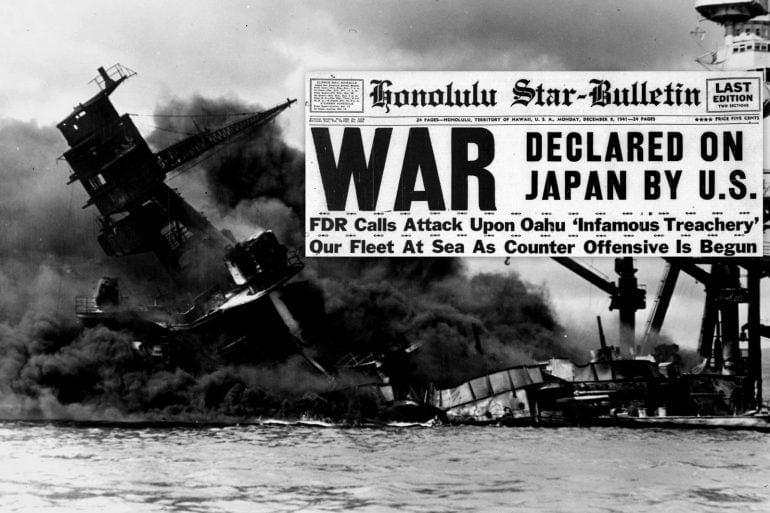
Here is a link to the now famous memorial of Pearl Harbor on O'ahu. A very informational website and you are able to book your tour to visit Pearl Harbor:
https://www.nps.gov/perl/index.htm
The movement for statehood began to gain momentum in the 20th century, particularly after World War II. Hawaii’s residents began pushing harder for full representation and the same rights afforded to other U.S. citizens. As a territory, Hawaii had a non-voting delegate in Congress and lacked the ability to vote in presidential elections.
One major turning point came in 1954, when the Democratic Party gained control of the Hawaiian legislature, initiating political reforms that expanded civil rights and labor protections. This shift helped demonstrate Hawaii’s readiness for self-governance and full participation in American democracy.
Support for statehood also grew on the mainland, particularly as civil rights and equality became more prominent national issues. In March 1959, Congress passed the Hawaii Admission Act, which President Dwight D. Eisenhower signed into law. On June 27, 1959, Hawaiians voted overwhelmingly in favor of statehood, with more than 94% voting “yes.”
Finally, on August 21, 1959, Hawaii was officially admitted to the United States as the 50th state.
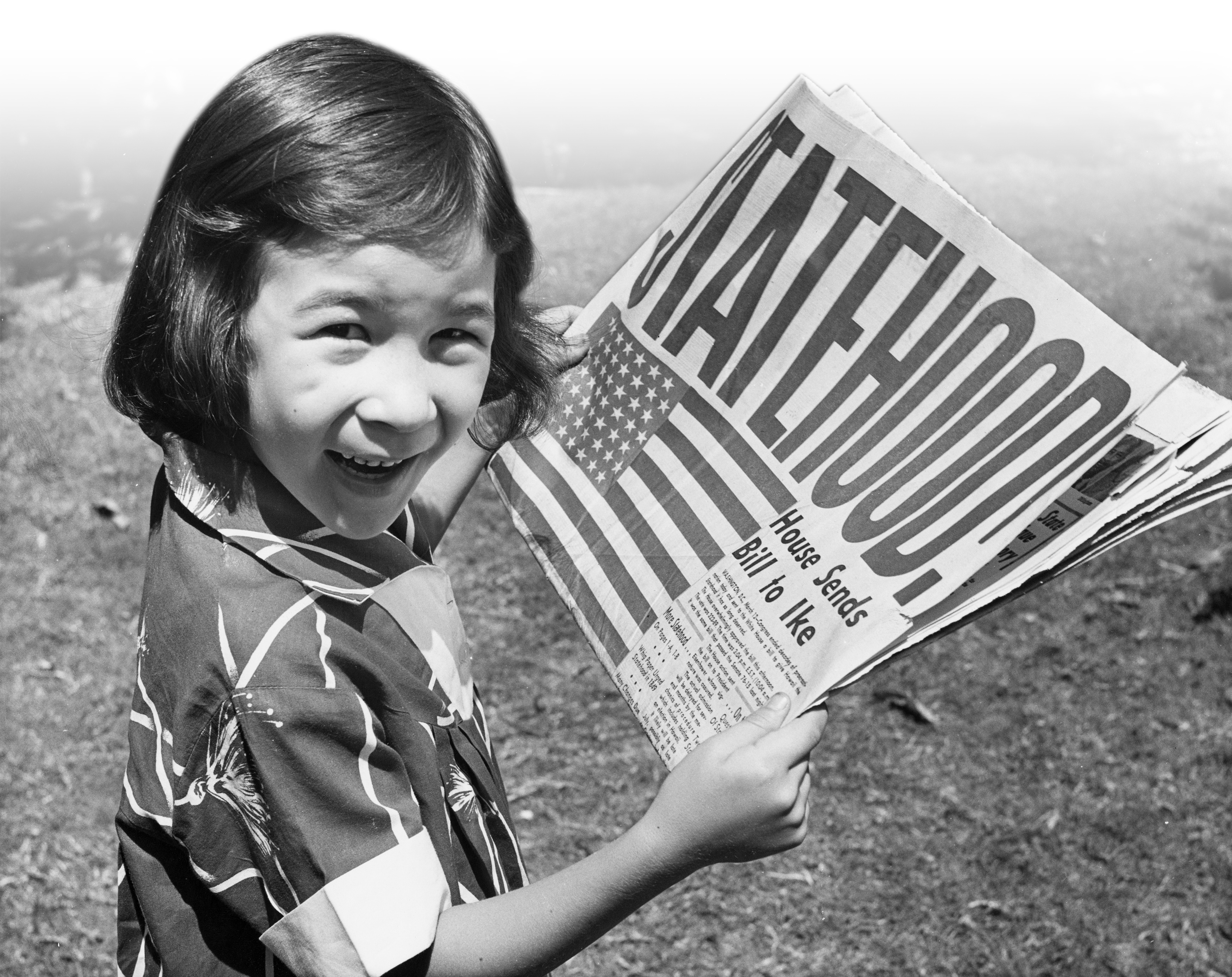
Today, Hawaii stands as a vibrant and diverse state with a unique blend of cultures, languages, and traditions. It is both a major tourist destination and a hub for the U.S. military. However, the legacy of colonization and statehood continues to spark conversation and activism.
Native Hawaiian groups continue to seek recognition of historical injustices, including the illegal overthrow of their monarchy and the loss of sovereignty. In 1993, President Bill Clinton signed the “Apology Resolution,” acknowledging the U.S. role in the overthrow and offering a formal apology to Native Hawaiians.
While statehood brought benefits such as federal representation and economic development, it also brought challenges. For many Hawaiians, the anniversary of statehood is not just a celebration, but also a time of reflection on what was gained—and what was lost.
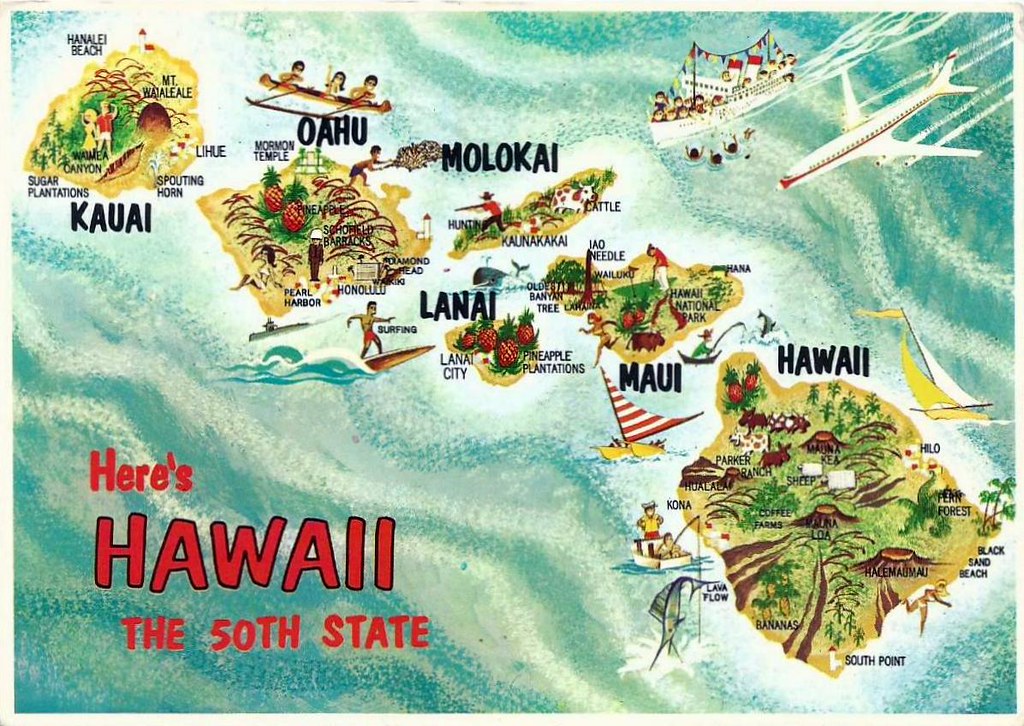
The journey to statehood for Hawaii was long, complicated, and deeply intertwined with issues of sovereignty, identity, and geopolitics. On August 21, 1959, Hawaii joined the union, becoming the 50th state and forever altering its place in world history. While the legal and political status of Hawaii has been settled in the eyes of the U.S. government, the story continues to evolve as Native Hawaiians and allies push for recognition, justice, and cultural revival. Understanding when—and how—Hawaii became a state invites us to look more deeply into American history and the complexities of nationhood.
If you would like to read and learn more about interesting things in Hawaii! Check out our blog page here on our website!
or
In Hawai‘i, few traditions are as iconic and meaningful as the lei. These handcrafted garlands—made from flowers, leaves, shells, seeds, or feathers—embody the essence of aloha, representing love, friendship, celebration, and respect. Worn with pride and given with intention, they are far more than decorations; they are powerful cultural expressions with deep historical roots.
The practice of making and wearing floral lei's was introduced to Hawai‘i by Polynesian voyagers who settled the islands centuries ago. Along with agricultural knowledge and spiritual beliefs, they brought customs that would evolve into uniquely Hawaiian practices. Adornments made from native materials—maile vines, fragrant blossoms, polished seeds, and more—became an integral part of everyday life and ceremonial occasions.
In ancient Hawai‘i, these garlands marked significant moments and conveyed social status or spiritual reverence. Chiefs (ali‘i) wore intricate designs crafted from rare or sacred elements to display their rank and power. The creation process, known as haku, was a blend of artistry and reverence, often performed with chants and care, reinforcing a deep connection to the land and the gods.
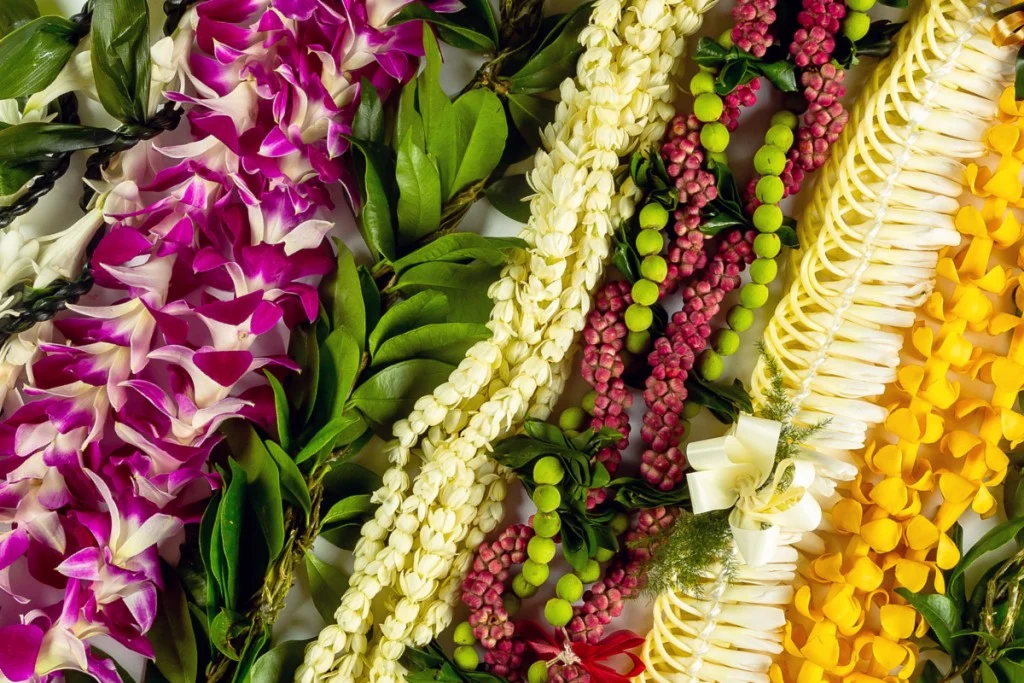
At the heart of this tradition lies the Hawaiian value of aloha, a word rich with meaning—love, compassion, kindness, and mutual respect. Presenting a lei to someone is not simply a gift; it is a gesture of connection, gratitude, and affection. It speaks without words, offering a bond between giver and receiver.
Different materials hold specific meanings. Maile vines, used in weddings and important ceremonies, symbolize peace and honor. Pikake (jasmine) is linked to romance and elegance, while orchids and plumeria are favorites for festive occasions due to their vibrant colors and scents. Kukui nuts, shiny and dark, are associated with enlightenment, protection, and peace.
In Hawaiian etiquette, such offerings should be accepted graciously. Refusing or removing one in the presence of the giver can be seen as disrespectful, as each is given with heartfelt intention.
To honor the tradition and its cultural importance, Hawai‘i celebrates Lei Day each year on May 1st. Established in 1927, this holiday pays tribute to the craftsmanship, symbolism, and enduring relevance of these floral expressions. Across the islands, schools and communities host parades, hula performances, musical events, and lei-making competitions.
Each island has a flower and color associated with it. For instance, O‘ahu is represented by the golden ‘ilima, while Maui is symbolized by the pink lokelani rose. These distinctions highlight both the diversity and unity of Hawaiian identity, proudly displayed during Lei Day festivities.
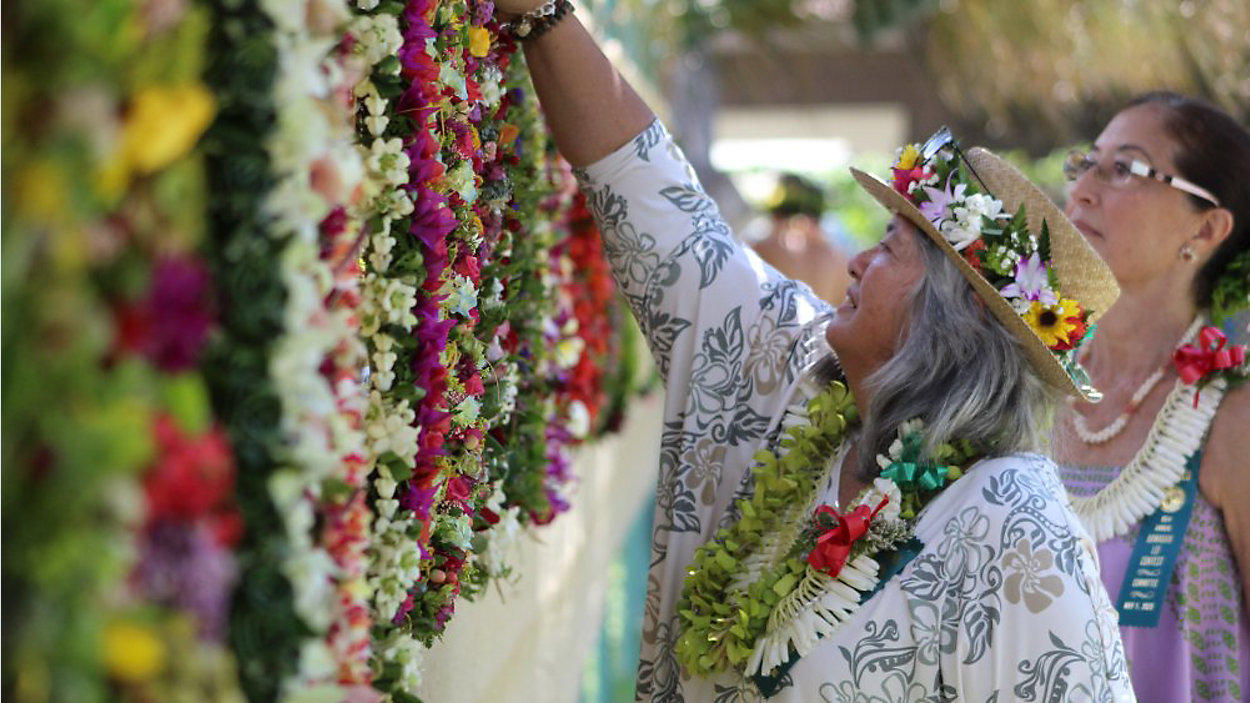
This link will give more history and significance on Lei day in Hawaii:
Traditional lei-making involves several distinct techniques:
Creating one is often a meditative process. Many artisans gather materials mindfully, offering thanks or chanting in acknowledgment of nature’s gifts. The final product is more than a beautiful adornment—it is a reflection of thoughtfulness, respect, and artistry.
The Haku Lei: A Braided Symbol of Hawaiian Tradition
The Haku lei is one of the most cherished and visually striking forms of lei in Hawaiian culture. Unlike the typical stringed garland, this version is carefully braided or woven using fresh flowers, greenery, and sometimes ferns, into a flexible base—often worn around the head like a crown.
Rooted in ancient tradition, the Haku style has long been associated with celebration, honor, and connection to nature. Whether worn for weddings, hula performances, graduations, or festivals, it carries a deep sense of pride and reverence. Each one is handmade with intention, often combining blooms and foliage with symbolic meanings to reflect the occasion or individual being honored.
More than a beautiful adornment, the Haku lei embodies the Hawaiian values of aloha (love), pono (righteousness), and kuleana (responsibility). In both traditional and modern ceremonies, it remains a vibrant expression of heritage and artistry.
Today, these garlands continue to hold a central place in Hawaiian life. They’re shared at graduations, birthdays, weddings, farewells, and other milestones. Whether used to welcome a guest, honor an achievement, or commemorate a loved one, each creation carries a message—a tangible expression of aloha.
Though materials and designs may evolve, the core meaning endures. Each garland tells a story of connection and culture, linking generations and celebrating the beauty of human relationships. In every gift, every flower, and every thread, the soul of Hawai‘i is alive and flourishing.
If you would like to read and learn more about interesting things in Hawaii! Check out our blog page here on our website!
or
The Hawaiian Islands, a captivating archipelago located in the central Pacific Ocean, are among the most iconic travel destinations in the world. With their lush tropical landscapes, volcanic peaks, pristine beaches, and rich cultural heritage, the islands offer a unique blend of natural beauty and human history that continues to enchant visitors and locals alike.
Hawaii is the 50th state of the United States and consists of 137 islands, though the primary focus lies on the eight major islands: Hawaiʻi (often referred to as the Big Island), Maui, Oʻahu, Kauaʻi, Molokaʻi, Lānaʻi, Niʻihau, and Kahoʻolawe. These islands were formed by volcanic activity over millions of years, as the Pacific tectonic plate slowly moved over a geological hotspot. The result is a chain of islands that vary widely in size, landscape, and ecosystem.
Each island possesses its own distinct character. The Big Island, for instance, is known for its active volcanoes, including Kīlauea and Mauna Loa, as well as diverse climates ranging from tropical rainforests to arid deserts. Maui offers lush valleys, dramatic coastal cliffs, and the iconic Haleakalā Crater. Oʻahu, home to the state capital Honolulu and the famous Waikīkī Beach, is a cultural and economic hub. Kauaʻi, often referred to as the "Garden Isle," is renowned for its stunning natural beauty, including the Nā Pali Coast and Waimea Canyon.
Home to the capital city, Honolulu, Oʻahu is the most populated and visited island in Hawaii. Known as “The Gathering Place,” Oʻahu blends urban sophistication with tropical beauty. Visitors can explore iconic Waikīkī Beach, surf the legendary North Shore waves, hike up Diamond Head Crater, or dive into history at Pearl Harbor. The island is also rich in nightlife, dining, shopping, and cultural experiences, making it an ideal destination for first-time visitors.
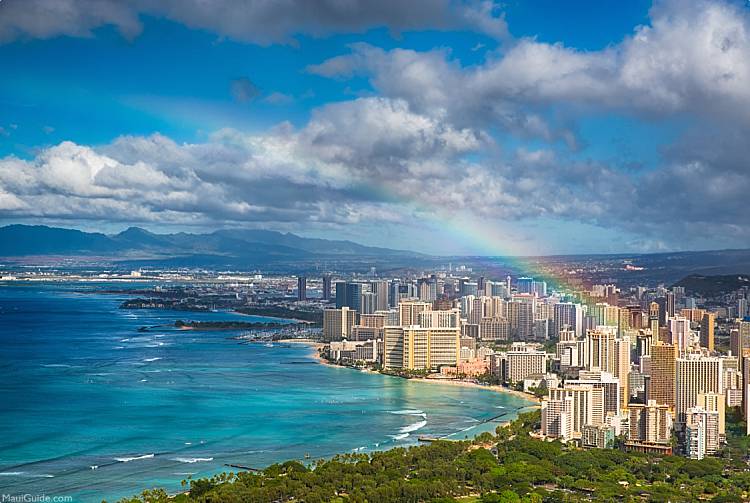
Maui is renowned for its lush landscapes, luxury resorts, and the scenic Road to Hāna. It’s the second-largest Hawaiian island and offers a perfect balance of adventure and relaxation. Nature lovers flock to Haleakalā National Park to witness the sunrise from the summit of the dormant volcano, while beachgoers enjoy the golden sands of Kāʻanapali and Wailea. During the winter months, Maui is also one of the best spots in the world for whale watching.
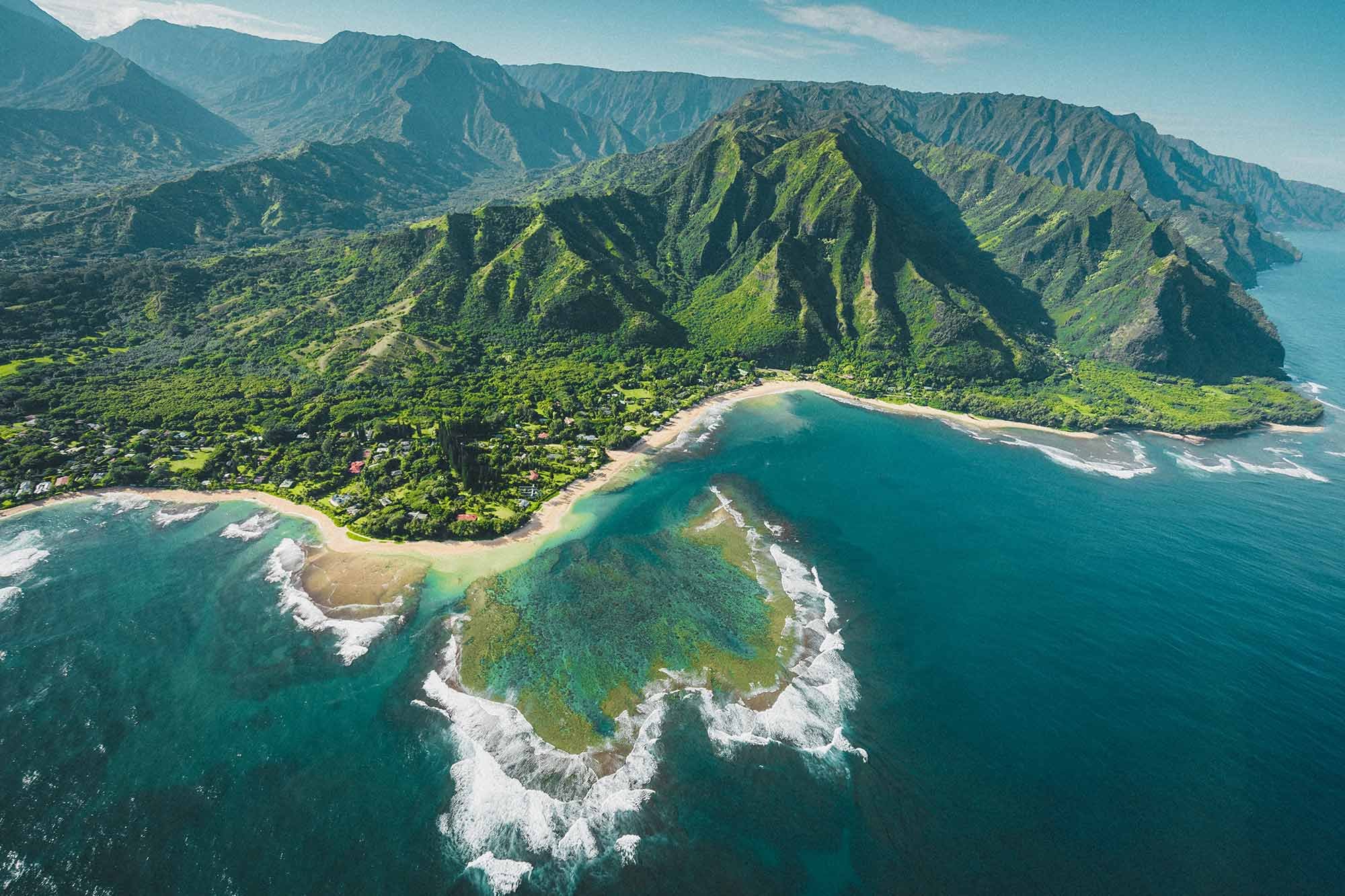
Here are many informational blogs of Maui we have posted:
The Big Island lives up to its name — it’s larger than all the other islands combined. It boasts a diverse range of climates and terrains, from snow-capped mountains to black sand beaches and active lava flows. Hawaiʻi Volcanoes National Park is the crown jewel, where visitors can see Kīlauea and Mauna Loa, two of the world’s most active volcanoes. The Big Island is also a hub for astronomy, coffee farming (especially Kona coffee), and marine life encounters like manta ray night dives.
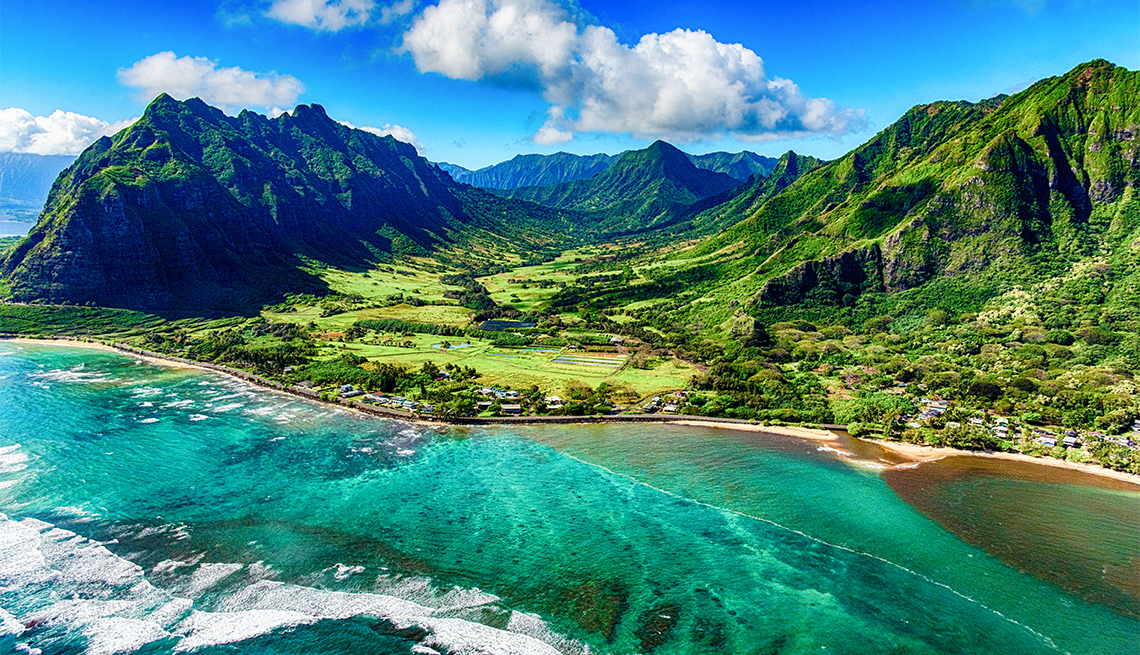
Kauaʻi is the oldest and most lush of the main islands, often dubbed “The Garden Isle” for its emerald valleys, waterfalls, and dense rainforests. It’s a paradise for hikers and nature lovers, offering jaw-dropping trails through the Nā Pali Coast and Waimea Canyon, also known as the “Grand Canyon of the Pacific.” With a more laid-back vibe, Kauaʻi is ideal for those looking to escape the crowds and reconnect with nature.
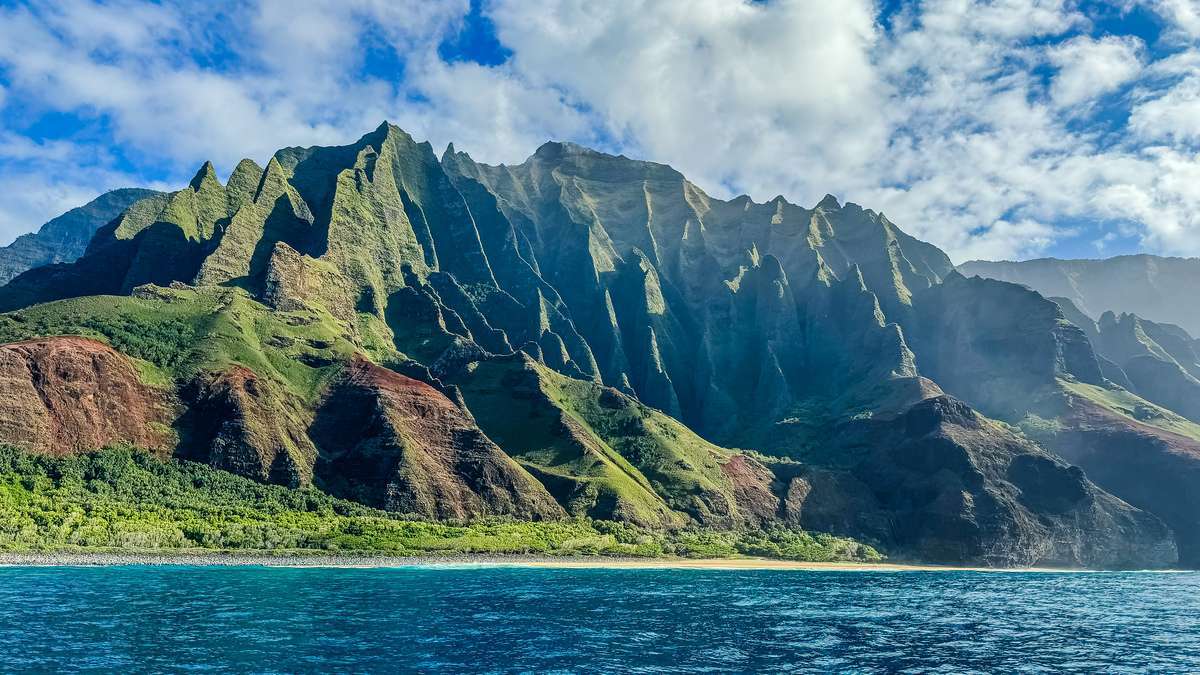
Once the world’s largest pineapple plantation, Lānaʻi today is a quiet, luxurious retreat. It’s one of the least populated islands and offers a tranquil atmosphere with upscale resorts, rugged landscapes, and off-the-beaten-path adventures. Visitors can explore Keahiakawelo (Garden of the Gods), go horseback riding, or snorkel in Hulopoʻe Bay. It’s a perfect getaway for privacy and pampering.

Molokaʻi is a place where Hawaiian traditions and community values remain deeply rooted. Known as “The Friendly Isle,” it offers a glimpse into what Hawaii might have looked like decades ago. There are no major resorts or high-rise buildings — just unspoiled beauty and genuine aloha spirit. Highlights include Kalaupapa National Historical Park, Halawa Valley, and the tallest sea cliffs in the world.
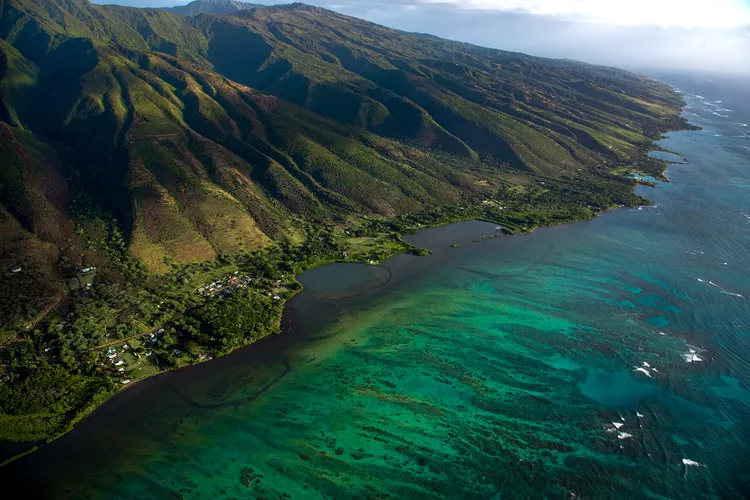
Privately owned and off-limits to most tourists, Niʻihau is often referred to as “The Forbidden Isle.” With a small population of Native Hawaiians, the island has preserved traditional Hawaiian culture and language. Access is typically limited to invited guests or through helicopter tours. Its isolation makes it a place of cultural significance and mystery.

Uninhabited and largely inaccessible, Kahoʻolawe has a complex history. Once used as a military training ground, it is now the focus of ongoing restoration efforts. Considered sacred by Native Hawaiians, it is not open to casual tourism, but serves as a symbol of cultural renewal and ecological healing.
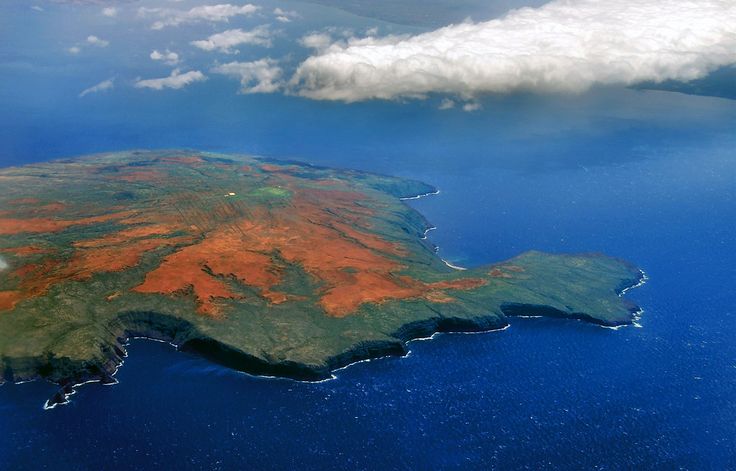
Beyond its natural allure, Hawaii holds a deeply rooted cultural legacy that traces back to Polynesian voyagers who first settled the islands around 1,500 years ago. These early settlers brought with them advanced knowledge of star navigation, agriculture, and societal organization, laying the foundation for a thriving indigenous culture.
The Hawaiian language, hula dance, traditional chants ('oli), and spiritual beliefs remain vital aspects of Hawaiian identity. While these traditions were once suppressed following Western colonization and the eventual annexation of Hawaii by the United States in 1898, there has been a powerful cultural renaissance in recent decades. Native Hawaiian communities have been working tirelessly to revitalize language and customs, advocating for greater recognition and sovereignty.
Visitors to Hawaii have the opportunity to engage with this living culture through authentic experiences such as attending a traditional lūʻau, visiting heiau (ancient temples), or exploring museums and cultural centers like the Bishop Museum in Honolulu or the Lyman Museum on the Big Island.
Hawaii is also one of the most ecologically diverse regions in the world. Due to its isolation and varied topography, it is home to a high number of endemic species — plants and animals found nowhere else on Earth. From the colorful Hawaiian honeycreepers to the endangered Hawaiian monk seal, the islands’ biodiversity is both fascinating and fragile.
However, this ecological uniqueness comes with challenges. Invasive species, climate change, and urban development have placed significant pressure on Hawaii’s native ecosystems. Conservation efforts are critical, and many organizations are actively involved in habitat restoration, native species protection, and sustainable tourism initiatives. Visitors can contribute by respecting local wildlife guidelines, participating in eco-tours, and supporting conservation-focused businesses.
Central to Hawaiian culture is the concept of aloha, a word often used to say hello or goodbye, but which carries a much deeper meaning. Aloha represents love, compassion, respect, and a sense of connection between people and the natural world. This spirit of aloha is palpable across the islands and influences everything from interpersonal interactions to community values.
Embracing the spirit of aloha means more than enjoying a vacation in paradise — it encourages a respectful and mindful approach to travel, recognizing the importance of preserving Hawaii’s environment and honoring its indigenous heritage.
The Hawaiian Islands are far more than a postcard-perfect getaway. They are a living tapestry of geology, biodiversity, and cultural history that continues to evolve. Whether you're hiking through volcanic craters, swimming in coral reefs, or learning the stories of ancient Hawaiian chiefs, the islands offer countless opportunities for discovery and connection.
As tourism continues to shape the islands’ future, a commitment to responsible travel and cultural respect is essential. By engaging with the land and its people with intention and humility, visitors can ensure that the magic of Hawaii endures for generations to come.
If you would like to read and learn more about interesting things in Hawaii! Check out our blog page here on our website!
or
Sitting along the emerald hills of Maui’s lush north shore lies Haiku, a charming upcountry village that offers a refreshing alternative to the island’s busy beach resorts. Known for its misty jungles, rolling pastures, and laid-back vibe, Haiku is a hidden gem that draws in adventurers, artists, and travelers seeking authentic connection — to nature, culture, and themselves.
Whether you’re planning a full stay in Haiku or a quick detour off the Road to Hana, this peaceful community has much to offer. Here's how to make the most of your time in Haiku, Maui.
Kick off your adventure with a visit to Twin Falls, one of the most accessible and rewarding waterfall hikes on the island. Located just past mile marker 2 on the Road to Hana, this easy-to-moderate trail weaves through bamboo forests, guava trees, and muddy jungle paths to reach a series of waterfalls and swimming holes.
Pack water shoes and a towel — and don’t be afraid to get wet! Local vendors near the trailhead often sell fresh coconuts and smoothies, perfect for a post-hike refresh.
At the heart of the village is the Haiku Marketplace, a community hub filled with local food, art, and character. Set in the historic Haiku Cannery building, the marketplace includes health-conscious eateries, a kombucha bar, artisan boutiques, a surf shop, and a well-stocked general store.
Try a locally sourced poke bowl, sip on small-batch kombucha, or grab a handmade gift to remember your trip. The vibe is casual, friendly, and authentically Maui.
No visit to Haiku is complete without a meal at Colleen’s at the Cannery, a beloved local staple located in the historic Haiku Cannery building. This laid-back café and bar serves up hearty breakfasts, fresh island-inspired lunches, and cozy dinners — all with a focus on quality ingredients and welcoming service.
Whether you’re fueling up before a waterfall hike or winding down after a day on the Road to Hana, Colleen’s offers something for everyone. Locals rave about the banana macadamia nut pancakes, wood-fired pizzas, and daily fish specials. The open-air seating, rustic charm, and local artwork make it a perfect spot to soak in the upcountry vibe.
Bonus: The espresso bar and cocktail menu are just as good as the food.
Haiku’s lush landscape is best explored with the help of local guides who know the trails and hidden gems. Eco-adventure tours offer a chance to hike off the beaten path, explore secret waterfalls, swing into jungle pools, and learn about native Hawaiian flora and history.
Whether you’re a family with kids or a solo explorer, these tours provide safe, insightful access to Haiku’s wild beauty — often with fresh fruit picked right from the trail.
For adrenaline with a view, NorthShore Zipline in Haiku delivers an unforgettable experience. Set on a historic World War II base in the lush upcountry jungle, this family-friendly zipline tour features seven lines, sky bridges, and soaring platforms with panoramic views of Maui’s north shore.
It’s the perfect mix of adventure and natural beauty — with expert guides, a safe and fun environment, and just enough thrill to keep your heart racing. Great for first-timers and seasoned zipliners alike, NorthShore Zipline is a must-do for anyone looking to add excitement to their Haiku itinerary.
Check out tour availabilities here!
Though technically just outside Haiku in nearby Paia, Ho’okipa Beach Park is an essential stop. Known as a global windsurfing mecca, it also offers jaw-dropping views of the coastline and excellent sea turtle spotting — especially in the late afternoon.
Bring a camera and take a walk down to the beach where you’re likely to see dozens of honu (Hawaiian green sea turtles) basking on the sand.

Haiku is home to a vibrant community of yogis, healers, and wellness seekers. It’s not uncommon to find yourself attending a sunrise yoga session overlooking a jungle valley, or joining a sound healing circle beneath the stars.
Many local retreat centers and eco-lodges offer single-day experiences or longer stays focused on mindfulness, nature connection, and self-care. Whether you're looking to deepen your practice or simply unwind, Haiku is a sanctuary for the soul.
Haiku serves as a perfect starting point for the legendary Road to Hana — one of the world’s most scenic drives. If you’re short on time or not ready to brave the full route, just exploring the early portion from Haiku offers lush vistas, waterfalls, botanical gardens, and coastal lookouts.
Be sure to drive carefully — the roads are narrow and winding, but the rewards are immense. Starting early from Haiku gives you a head start on the crowds.
Haiku may be small, but it packs a flavorful punch. From Thai food trucks to vegan cafés and fresh fruit stands, there’s no shortage of delicious options. Try local specialties like taro chips, lilikoi (passion fruit) treats, or fresh-baked banana bread.
For an unforgettable evening, check out Nuka, a beloved Japanese restaurant known for sushi made with locally caught fish and seasonal island ingredients. Reservations recommended — this spot is a favorite among locals and visitors alike.
Haiku is more than a place — it’s a feeling. A slow-paced, rain-kissed, quietly magical corner of Maui where life flows with the rhythms of the land. Here, you’ll trade crowded beaches for bamboo trails, loud nightlife for waterfall serenades, and screen time for starlit skies.
If you’re craving a deeper, more grounded connection to Hawaii — one rooted in nature, culture, and community — Haiku awaits with open arms and endless green horizons.
Travel Tips:
If you would like to read and learn more about interesting things in Hawaii! Check out our blog page here on our website!
or